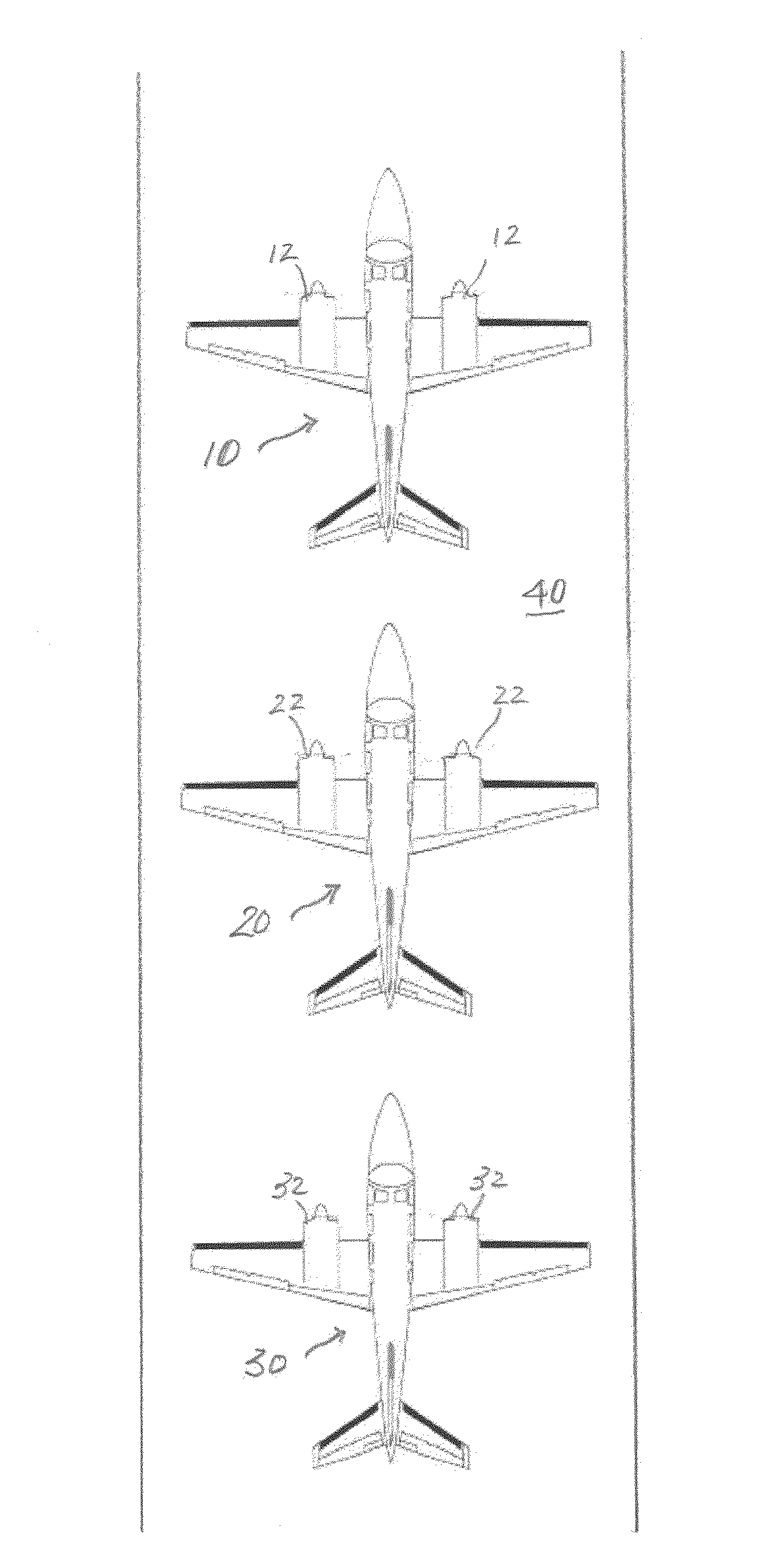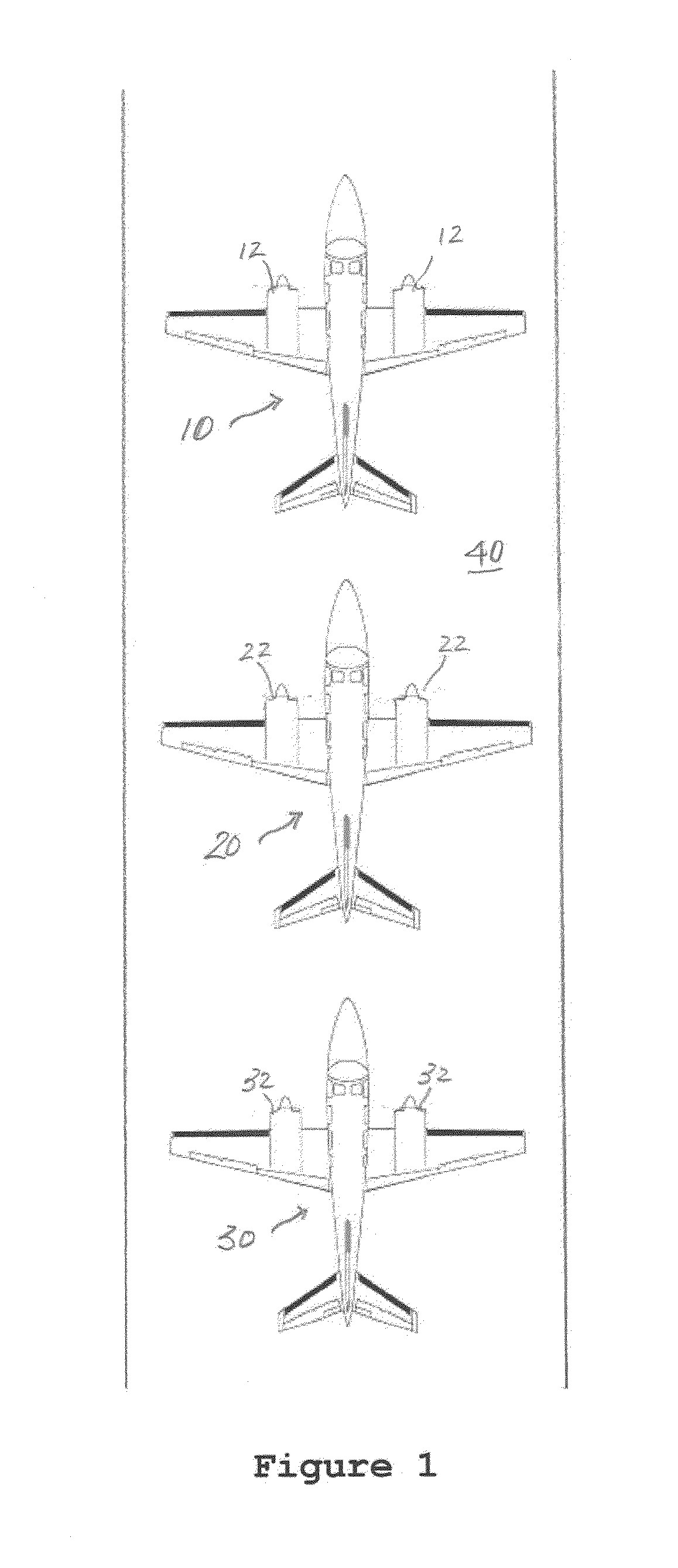Method for improving efficiency of airport deicing operations
a technology for airports and operations, applied in the direction of energy-efficient operation measures, ground installations, alighting gear, etc., can solve the problems of ice and/or snow on the wings not being able to operate aerodynamically, risk of problems, and two types of fluids may not be compatible, so as to increase the efficiency of airport deicing operations
- Summary
- Abstract
- Description
- Claims
- Application Information
AI Technical Summary
Benefits of technology
Problems solved by technology
Method used
Image
Examples
Embodiment Construction
[0019]The importance of removing ice and other frozen contaminants from aircraft surfaces and structures and preventing the build up of frozen contaminants cannot be overstated. Procedures currently in use prior to takeoff are generally effective in deicing exposed aircraft surfaces and applying anti-icing agents to those surfaces to prevent ice build up during flight. When taxiways and runways are wet or covered with frozen or partially frozen contaminants, such as frost, ice, snow, or slush, aircraft wheels directly contact these frozen contaminants, and landing gear components and other structures of a taxiing aircraft may be sprayed with melting snow or slush during taxi. If the sprayed liquid or slush contains deicing chemicals and reaches the engines, damage to the engine structures is likely.
[0020]The surfaces of aircraft in the vicinity of a taxiing aircraft can also be sprayed with these contaminants. If the spraying of frozen contaminants occurs after an aircraft has been ...
PUM
 Login to View More
Login to View More Abstract
Description
Claims
Application Information
 Login to View More
Login to View More - R&D
- Intellectual Property
- Life Sciences
- Materials
- Tech Scout
- Unparalleled Data Quality
- Higher Quality Content
- 60% Fewer Hallucinations
Browse by: Latest US Patents, China's latest patents, Technical Efficacy Thesaurus, Application Domain, Technology Topic, Popular Technical Reports.
© 2025 PatSnap. All rights reserved.Legal|Privacy policy|Modern Slavery Act Transparency Statement|Sitemap|About US| Contact US: help@patsnap.com


